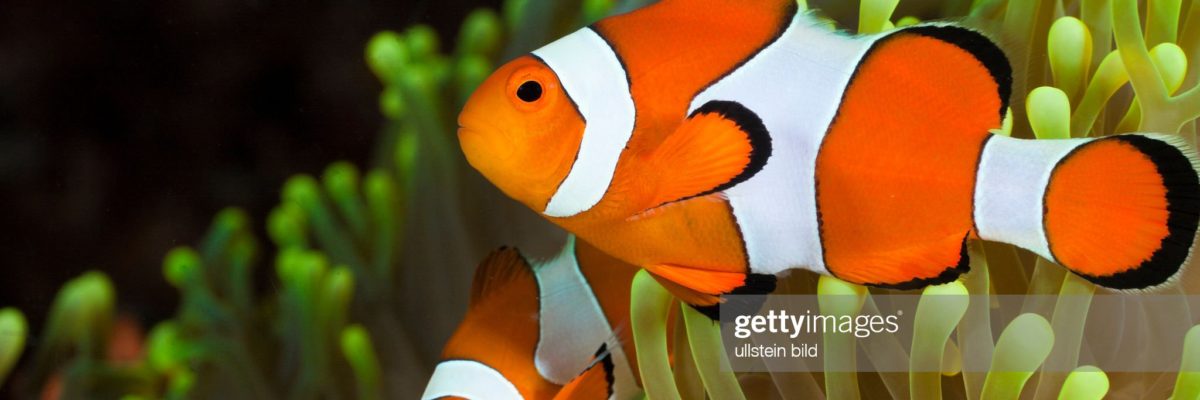
The humble clownfish. They’re a hardy, vibrant and easily recognisable tankmate. Known for their symbiotic relationships with anemones (called ‘mutualistic symbiosis’), sociable temperaments and meteoric rise in popularity since 2003 thanks to the Pixar ‘Finding Nemo’ animation. The captive breeding of these beautiful fish is – thankfully – long established. In addition to everybody’s favourite fish, Rising Tide Conservation (who I wrote about in a previous article) have also accomplished the captive breeding of other Finding Nemo faces, such as the Regal Tang (Dory) and Yellow Tang (Bubbles).
The success of this film was so astronomical in fact, that it even gave rise to a worrying new trend known as ‘Finding nemo syndrome’, where well meaning but incredibly short sighted pet owners decided to buy clownfish or other marine species and flush them down the toilet in an attempt to set them free.
The release of Finding Nemo prompted scientists to try and determine whether the film franchise actually caused a reduction globally in clownfish populations, however, samples for the studies were small, and any definitive answer was unsubstantiated.
Before the ‘Nemo’ phenomenon however, clownfish were still a coveted fish by aquarists for their ease, beauty and ‘waddle’ style of swimming. They’re also a great beginner fish for new hobbyists, and with numerous species available (there are at least 30!), there will always be a variety to suit any set up. In fact, the only fish they won’t tolerate is any other type of clownfish. These fish also have unfussy diets and can be introduced to both rock only or coral incorporated aquariums. It’s because of all this, that they’re considered a staple fish for marine tanks.
Due to their easy care nature, it is unsurprising that they were one of the first marine fish to be successfully reared in captivity. Captive breeding itself was once an improbable and expensive non-starter. Although the years have taught us that it needn’t be this way and that it’s more about cracking each species particular code, with patience, specialised diets, holding fast on the necessary environmental parameters and repetition. Clownfish larvae are already ‘large’ upon hatching – in comparison to other tropical species – with babies about 4mm in length. They feed within the first 24 hours and mature at 50 – 100mm long.
It may not seem so from a novice perspective, but clownfish retain biological characteristics that make them a sympathetic choice for living and breeding in captivity. Even pairing them is uncomplicated, in a process known as sequential hermaphroditism, in order to breed, male clownfish can change gender. In the late 60s early 70s, experimentation, hype and research was building around aquaculture, but it wasn’t until 1973 that the process was successfully completed with the clownfish.
Making them the poster boys for this initial milestone. As previously stated in other articles, the aquarium trade has been criticised for its dependence on wild collection practices and how detrimental this is. So any and all breakthroughs in captive breeding are a positive step in making the hobby more sustainable.
Often, marine tank enthusiasts will see breeding behaviour exhibited by their paired clownfish. Mature, healthy fish tend to spawn once every 10-14 days, with anywhere between 100-1,500 eggs being laid on hard surfaces and hatching 8-10 days later. They’re such prolific breeders in fact, that there’s even a wikihow page on how to rear them yourself!
Tank raised specimens have a lower mortality rate than those that are taken from reefs, due to the fact they’ve been so extensively aquacultured, they’ve been engineered to be even stronger and more tolerant of people than their wild caught cousins. This makes captive bred specimens much more appealing to a hobbyist, and the prospect of breeding them at home is a relatively simple and attractive one. Why wouldn’t you take a crack at it? If the payoff is a pet with increased longevity, amiability and tolerance.
As previously touched upon, there are 30 known species of clownfish divided up into two genera: ‘Amphiprion’ and ‘Premnas’. Although most fish will possess very similar characteristics to that of the infamous ‘Nemo’ particularly in the wild, with these ‘OGs’ an ever attractive and desired aesthetic for reef tanks. Because they’re all so closely related, it allows for interbreeding.
All clownfish will fit into six ‘complexes’, and it’s now apparent from any trip into a pet shop with a marine section, that clownfish have diversified their look radically over the years. This domestication has marked a cornerstone in the creation of ‘designer’ fish through genealogy. Labels on these clownfish such as ‘Ultra’, ‘Premium’ or ‘Grade’ will pertain to colourful edging of the stripes, the amount of white on the body or unusual markings. While there’s no denying their beauty, these fish often come with hefty price tags, there are some varieties of designer clownfish in the States that can fetch up to $5,000.
The prevalence and evolution of these designer clownfish provides another interesting observation when it comes to the future of the hobby. If live imports and fish transportation laws become more stringent, captive breeding and aesthetical manipulation will increase. If aquaculture practices are streamlined, this opens the door for other species to have their appearance altered, it is almost impossible to imagine, but it is a very real possibility that marine species we all know and love now, may end up looking completely unrecognisable in the trade, in the future.
Selective breeding and genealogy amongst domestic fish is an extensive subject, with both its merits and disadvantages. At TankBred, with our focus geared towards making marine fish breeding easier and more accessible, we can see and appreciate both sides of the coin. Genetic engineering is in its infancy in the marine trade, and only time will reveal more scientific developments that will no doubt significantly impact the industry. For now, we make the effort to be a part of any process that’s trajectory is a positive one.